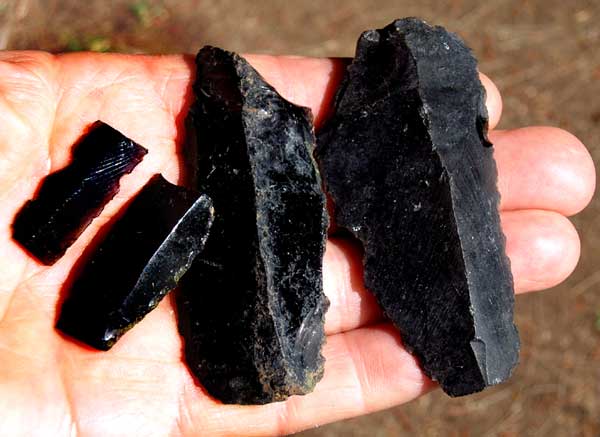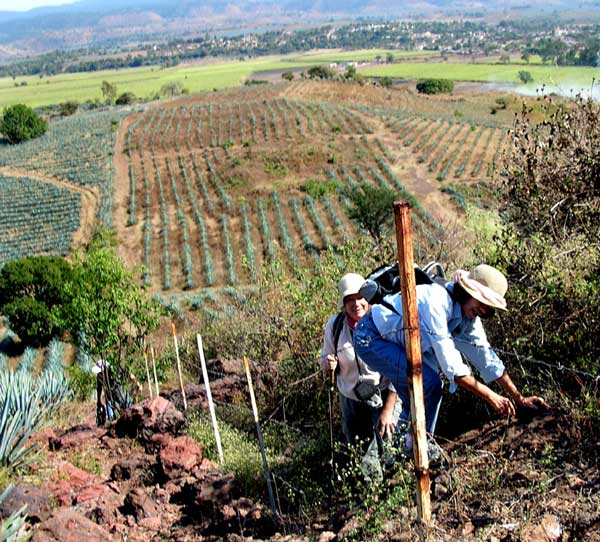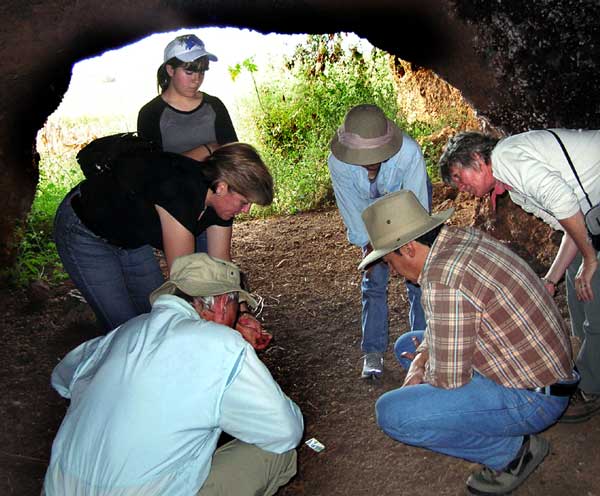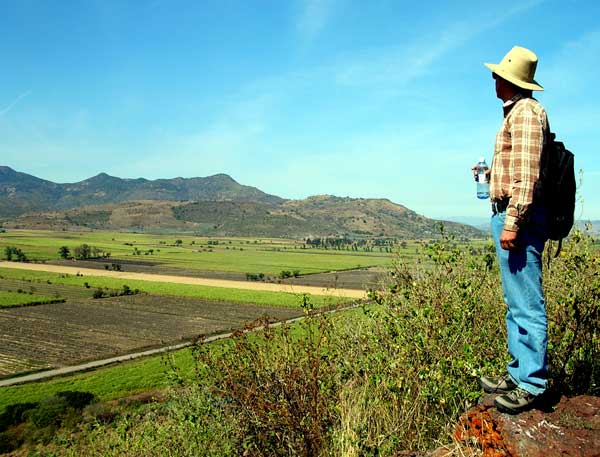 According to archeologist Rodrigo Esparza, the
biggest obsidian workshop in Jalisco—and quite possibly the largest in
the entire world—lies atop an island which is surrounded by a sea of
sugar cane. Atitlán means “the place of obsidian” and for countless
centuries it stood proudly in the middle of the Laguna de Magdalena, a
lake more than 70 square kilometers in size, which was a major feature
of the Jalisco landscape until, in the 1940’s, the Mexican government
decided to dry it up.
According to archeologist Rodrigo Esparza, the
biggest obsidian workshop in Jalisco—and quite possibly the largest in
the entire world—lies atop an island which is surrounded by a sea of
sugar cane. Atitlán means “the place of obsidian” and for countless
centuries it stood proudly in the middle of the Laguna de Magdalena, a
lake more than 70 square kilometers in size, which was a major feature
of the Jalisco landscape until, in the 1940’s, the Mexican government
decided to dry it up.“They wanted to create more cane fields,” says Esparza, who is co-director of the Teuchitlan Guachimonton Project, “but the Huichol Indians were devastated when they discovered what had been done.”
The local tribes had been carrying out special ceremonies on the island since time immemorial, ceremonies which had to be performed in front of a large body of water. Eventually—with the help of Phil and Acelia Weigand—a new site for these rituals was found on la Isla de los Alacranes (Scorpion Island) in Lake Chapala.
Another remarkable thing about Atitlán is that it was here where the Spaniards decided to construct the very first chapel ever seen in western Mexico, another indicator that this now abandoned and forgotten spot was, for the indigenous people, a most sacred site.
So, we were delighted one Saturday when archeologists Rodrigo Esparza and Cyntia Ramirez invited us to visit the former island of Atitlán, also called La Otra Banda and now known as El Cerro de Las Cuevas (the hill of the caves). This place is located about 14 kilometers southwest of Magdalena and was the largest of five islands that were situated in the ex-laguna.
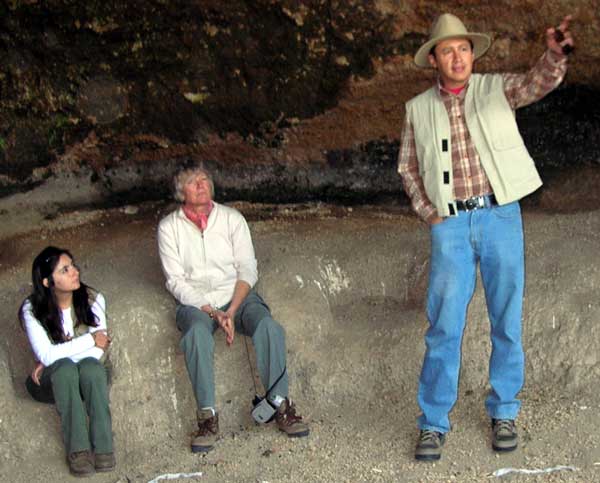 A
narrow dirt road skirts the west side of the hill and we passed several
dark openings before stopping in front of Esparza’s favorite cave. This
was a large room carved in soft pumice: an artificial cave. The people
who made it thoughtfully sculpted a sort of counter and several
convenient seats in the back of the cave. “From here,” said Esparza,
“people could carry out ceremonies while contemplating the lake, whose
shore was about 40 meters from the cave.”
A
narrow dirt road skirts the west side of the hill and we passed several
dark openings before stopping in front of Esparza’s favorite cave. This
was a large room carved in soft pumice: an artificial cave. The people
who made it thoughtfully sculpted a sort of counter and several
convenient seats in the back of the cave. “From here,” said Esparza,
“people could carry out ceremonies while contemplating the lake, whose
shore was about 40 meters from the cave.”After visiting this cave, we headed up the hillside on foot, our pants and shoes collecting great numbers of huizapoles (burrs) along the way. We soon came to a hole about two meters deep. This had been dug by tomb robbers and its walls gave us a good look at what had been going on at this site for hundreds of years.
“As you can see, the ground beneath our feet is a two-meter-thick layer of dirt filled with discarded fragments of obsidian tools,” explained the archeologist. “This island was probably the largest obsidian workshop in the world.” Geologist Chris Lloyd then jumped down into the pit and began pulling pieces of obsidian out of one wall. There were broken arrowheads, flat blades with sharp edges, and bits of other artifacts.
“All of these are the throwaways,” said Esparza, “and the pieces down at the bottom of the wall are approximately two thousand years old.”
We were amazed to learn that none of these obsidian artifacts were native to the island itself. “All of this obsidian originally came from another site near Teuchitlán, called La Joya. We proved this through Neutron Activation Analysis. The obsidian was probably brought here to be worked because water was used at some point in the process of preparing obsidian artifacts.”
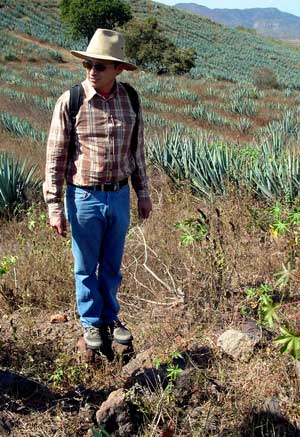 Next,
we headed further up El Cerro de las Cuevas, naturally picking up
plenty of new huizapoles. At last we came to a flat
spot where we gazed upon blocks of stone covered with weeds, all that’s
left of the first Christian chapel in this part of Mexico, built by the
Franciscans sometime in the 1530’s. This building measured about 8x12
meters and was probably quite magnificent, in order to impress the
locals. Apparently, however, the locals were not too happy about the
idea of a church being built right on top of their sacred island and
one day they rose up and killed all the friars (six of whom are now
considered saints by the Catholic Church).
Next,
we headed further up El Cerro de las Cuevas, naturally picking up
plenty of new huizapoles. At last we came to a flat
spot where we gazed upon blocks of stone covered with weeds, all that’s
left of the first Christian chapel in this part of Mexico, built by the
Franciscans sometime in the 1530’s. This building measured about 8x12
meters and was probably quite magnificent, in order to impress the
locals. Apparently, however, the locals were not too happy about the
idea of a church being built right on top of their sacred island and
one day they rose up and killed all the friars (six of whom are now
considered saints by the Catholic Church).After this history lesson, we hiked to the very top of the cerro, acquiring yet more burrs as well as numerous scratches from thorns plus a few punctures from agave spikes. At last we stood upon a lookout point from which we could clearly see kilometers of cane fields all around us, making it easy to imagine the impressive extent of La Laguna de Magdalena back when the Spaniards first arrived here. This is probably the most appropriate location in all western Mexico to shed a tear for those extraordinary people of ancient times, who once considered this cerro the most sacred island in their world.
How to get there
From the Guadalajara periférico, take highway 15 (to Nogales) 25 km to highway 70 which heads southwest towards Ameca. This is only accessible from the libre, so don't get on the cuota (toll road). Go about 17 kilometers until you come to the big sugar refinery near Tala. Continuing towards Ameca about 1.5 km, turn right onto the road heading for Teuchitlán. From this turnoff, it’s about 40 kilometers to Etzatlán. As you approach the town, you’ll see a Pemex gas station on your left. Here turn right and drive north three kilometers. Make a right turn onto a dirt road and drive east five kilometers. Now make a left turn and go 122 meters north. Either park here for the hike up the hill (the ruins of the chapel are 850 meters away at 13 Q 601920 2300942) or turn left and follow the dirt road about one kilometer to the Cave of the Sculpted Seats (at 13 Q 601582 2300896). Driving time from Guadalajara to the cave is about an hour and 10 minutes.
